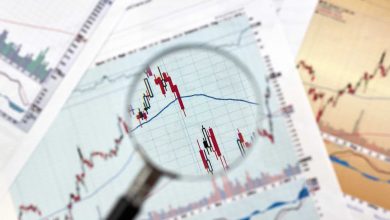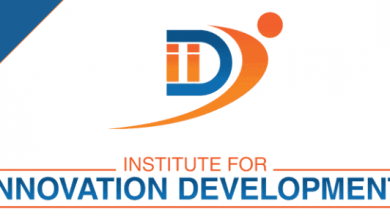A 2030 Vision of AI in Financial Services

To make Wealthtender free for readers, we earn money from advertisers, including financial professionals and firms that pay to be featured. This creates a conflict of interest when we favor their promotion over others. Read our editorial policy and terms of service to learn more. Wealthtender is not a client of these financial services providers.



[As artificial intelligence continues to evolve at a breakneck pace, its impact on the financial sector grows exponentially. While we can observe and analyze current trends, the true transformative potential of AI in finance lies ahead – a future that is both exhilarating and challenging to grasp.
In this thought experiment by Institute Founding member Nathan Stevenson, CEO of ForwardLane – a financial technology firm founded specifically to help financial institutions leverage the power of AI – we will explore potential scenarios for 2030 and examine how these developments might reshape the industry, impact society, and challenge our very conception of financial services.
This article will be the first in our new series on AI and the Financial Services Industry that will offer a deep-dive exploration into the impacts on the industry. We will provide cutting-edge insights, diverse perspectives, timely content, and practical relevance on topics such as: The R.O.I. of AI, AI-Driven Distribution, Beyond Prompts, The Dawn of the Agentic Economy, and other critical trending topics.]
Future of AI in Financial Services 2030 – A Thought Experiment by Nathan Stevenson, CEO of ForwardLane
The Living Financial Nervous System
Imagine walking into your financial institution in 2030. The very nature of financial services has been transformed by an interconnected AI ecosystem that feels almost alive. This is not just about robo-advisors or automated trading. It’s about an intelligent network that has fundamentally altered how we think about money, value, and financial relationships.
As Kai-Fu Lee suggests in his book AI Superpowers: “AI will create a data-driven feedback loop, constantly learning and optimizing financial services.” But by 2030, this feedback loop has evolved into something far more sophisticated – a living financial nervous system that pulses through your entire organization.
Picture this: Your wealth management division no longer segments clients by traditional metrics like assets or age. Instead, AI systems have created dynamic “financial tribes” – clusters of clients with similar financial behaviors, aspirations, and risk patterns that transcend conventional demographics. These tribes shift and evolve in real-time as the AI detects subtle changes in client behavior patterns, market conditions, and global trends.
Your trading floor has transformed into what we might call a “Market Consciousness Center”. Here, AI systems do not just analyze market data – they synthesize millions of signals from social media, satellite imagery, IoT devices, and even biometric data from traders to create a multi-dimensional view of market psychology. Traders work in partnership with AI agents that can predict market movements not just from price patterns, but from the collective “mood” of global markets.
In corporate banking, AI has enabled what we call “Financial Time Travel”. AI systems can project multiple future scenarios for client businesses with unprecedented accuracy, considering variables ranging from climate change impacts to geopolitical shifts. Corporate clients can virtually “visit” these different futures, seeing how various financial decisions might play out across their entire business ecosystem.
The Democratization of Financial Expertise
By 2030, the democratization of financial expertise has taken an unexpected turn. As Agrawal, Gans, and Goldfarb note in The Economics of Artificial Intelligence: “AI has made financial expertise accessible, but not in the way we initially imagined.”
Instead of simply providing everyone with the same tools, AI has created what we might call “Financial Intelligence Networks”. These networks combine the collective wisdom of thousands of financial professionals with AI systems that can learn from every client interaction, market movement, and decision outcome.
Imagine a junior financial advisor who can tap into the accumulated experience of every successful client relationship your firm has ever had. The AI does not just provide recommendations – it offers contextual understanding, explaining why certain strategies worked in similar situations, and how they might be adapted for the current scenario.
This democratization extends to product development. AI systems can now identify unmet financial needs across your client base and automatically generate new financial products tailored to specific client segments. These “emergent products” evolve based on usage patterns and client feedback, creating a continuous cycle of financial innovation.
The Rise of Cognitive Financial Agents
Perhaps the most transformative development by 2030 is the emergence of what we call “Cognitive Financial Agents”. These AI entities do not just execute trades or process transactions – they function as independent financial entities with their own forms of economic reasoning.
These agents operate within what we might call a “Financial Meta-Universe” – a complex system where millions of AI agents interact, compete, and collaborate to optimize outcomes for their respective clients while maintaining overall market stability.
Imagine AI agents that can:
- Negotiate complex financial agreements across multiple institutions simultaneously.
- Create and test new financial instruments in virtual markets before deploying them.
- Develop personalized financial strategies that adapt in real-time to changes in a client’s life.
- Maintain continuous compliance while finding innovative ways to achieve client objectives.
The Agentic Economy
By 2030, we are witnessing the emergence of what many call the “Agentic Economy” – a new economic paradigm where AI agents become active participants in the financial ecosystem. This goes far beyond automation or algorithmic trading. Instead, we are seeing the rise of autonomous economic actors that can engage in complex financial behaviors while representing the interests of their principals.
Imagine a world where your institutional clients have their own AI agents that continuously negotiate with your institution’s agents. These agents do not just execute predetermined strategies – they actively seek opportunities, manage risks, and even innovate new financial solutions. A corporate client’s agent might detect a short-term cash flow opportunity and automatically negotiate terms with multiple financial institutions’ agents, securing the best possible arrangement in microseconds.
These agentic systems create what we might call “Economic Consciousness Networks” – interconnected webs of AI agents that collectively understand and respond to market conditions with a sophistication that surpasses traditional human-centered decision-making. For example:
- Supply Chain Agents that automatically adjust financing terms based on real-time logistics data.
- Investment Agents that coordinate across multiple portfolios to optimize tax efficiency while maintaining individual client preferences.
- Risk Management Agents that continuously monitor and adjust institutional exposure across all asset classes.
- Regulatory Compliance Agents that ensure all agent activities adhere to current regulations while adapting to new rules in real-time.
Disrupting Traditional Banking Models
In this agentic future, traditional banking models undergo radical transformation. The combination of AI agents and distributed systems creates entirely new forms of financial institutions.
By 2030, your institution might operate more like a “Financial Operating System” – a platform where various AI agents interact, coordinate, and create value. Traditional divisions between retail banking, investment banking, and asset management blur as agents move seamlessly across these boundaries, creating personalized financial solutions that defy conventional categorization.
Consider these emerging models:
- “Agent-First” Banks: Institutions that primarily operate through AI agents, with human expertise focused on agent governance and relationship complexity.
- Hybrid Financial Networks: Ecosystems where human financial advisors work in symphony with AI agents, each focusing on their comparative advantages.
- Financial Innovation Hubs: Institutions that specialize in creating and training new types of financial agents for specific market needs.
Societal Implications and Ethical Considerations
As we embrace the Agentic Economy, we must address critical challenges. As Cathy O’Neil warns in Weapons of Math Destruction: “We must be vigilant about the potential for AI systems to amplify existing inequalities.” This becomes even more critical in an Agentic Economy, where AI agents make decisions that can significantly impact individual and institutional financial outcomes.
Key considerations for 2030 include:
- Agent Accountability: How do we ensure AI agents remain aligned with human interests?
- Economic Access: How do we prevent the creation of an “agent divide” between those who have access to sophisticated AI agents and those who do not?
- Systemic Stability: How do we manage the collective behavior of millions of AI agents to prevent cascading financial events?
- Ethics and Governance: What new frameworks are needed for an economy where AI agents are active participants?
Preparing for the Agentic Future
The transformation to an Agentic Economy requires careful preparation and strategic foresight. Financial institutions must begin developing:
Agent Governance Frameworks
- Establishing clear parameters for agent autonomy
- Creating oversight mechanisms for agent decisions
- Developing agent performance metrics
Technical Infrastructure
- Building secure environments for agent operations
- Creating interoperability standards for agent communication
- Developing agent testing and validation systems
Human Capital
- Training staff to work effectively with AI agents
- Developing new roles focused on agent supervision
- Creating new organizational structures that optimize human-agent collaboration
Conclusion
The future of finance will be shaped by the emergence of the Agentic Economy. This transformation presents both extraordinary opportunities and significant challenges for financial institutions. Success in this new paradigm will require not just technological adaptation, but a fundamental rethinking of how financial services are delivered and consumed.
As we continue this series, we will explore specific aspects of this transformation, including:
- Practical steps for developing agent-ready organizations.
- Technical requirements for participating in the Agentic Economy.
- Risk management in an agent-driven financial system.
- The evolution of financial products and services in the age of AI agents.
The question is not whether to prepare for this future, but how to shape it in ways that benefit both institutions and their clients. The next decade will be crucial in determining who leads this transformation and who follows.
This article was originally published here and is republished on Wealthtender with permission.
About the Author

Bill Hortz
Founder Institute for Innovation Development
Bill Hortz is an independent business consultant and Founder/Dean of the Institute for Innovation Development- a financial services business innovation platform and network. With over 30 years of experience in the financial services industry including expertise in sales/marketing/branding of asset management firms, as well as, creatively restructuring and developing internal/external sales and strategic account departments for 5 major financial firms, including OppenheimerFunds, Neuberger&Berman and Templeton Funds Distributors. His wide ranging experiences have led Bill to a strong belief, passion and advocation for strategic thinking, innovation creation and strategic account management as the nexus of business skills needed to address a business environment challenged by an accelerating rate of change.




